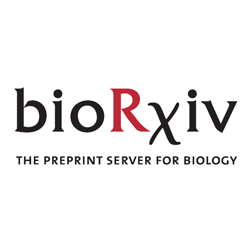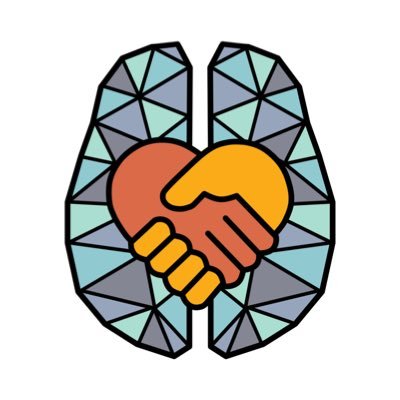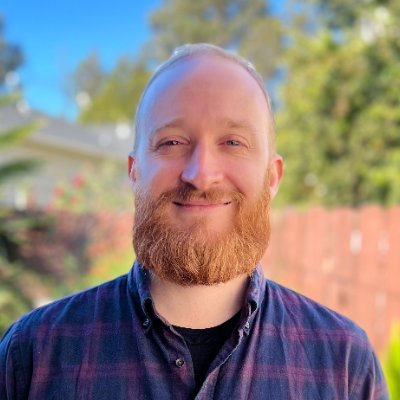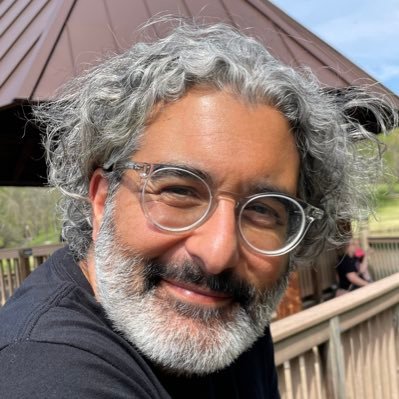
Liza Levitis
@LevitisLiza
Followers
369
Following
2K
Media
15
Statuses
193
PhD candidate in neuroscience through the NIMH 🇺🇸 and UCL 🇬🇧
London, England
Joined May 2018
Gene dosage disorders (GDDs) are a naturally occurring model for probing genetic influences on brain development. What can we glean about human brain vulnerability by profiling brain changes across multiple imaging modalities and GDDs? https://t.co/0wiS3nt4M2 Thread 👇
biorxiv.org
Diverse gene dosage disorders (GDDs) increase risk for psychiatric impairment, but characterization of GDD effects on the human brain has so far been piecemeal and lacked simultaneous analysis of...
1
12
26
Our paper is now out in Neuron! @NeuroCellPress (details from preprint thread below, now with more results and containerized pipeline!) w/ @bogglerapture @edbullmore @petra_vertes and amazing coauthors https://t.co/EFoaylbu1f
cell.com
Snyder et al. develop measures of human cortical folding, revealing an axis of linear to complex sulcal shape across the adult cortex. This axis predicts the phased emergence of sulci in utero and...
(1/11🧵) Echoes of fetal development etched into the adult brain 🧠 - Excited to share our new preprint! “A bipolar taxonomy of adult human brain sulcal morphology related to timing of fetal sulcation and trans-sulcal gene expression gradients” https://t.co/TOo9ArvBgU
3
16
34
If you're interested in sex differences in brain anatomy across species (humans and mice) come check out my poster @ 12:15 - 14:15 / #962. #OHBM2023 @bogglerapture
0
9
50
Big day for our CU-MONDAI team at #OHBM2023 today. @TiantianH98 is making her conference debut with an ✨oral presentation✨ in the neurodegeneration session this afternoon, presenting her work combining models of pathology production and spread
1
4
16
0
4
18
finally met @RemiGau and @ufangyang in person after years of working on @brainhackorg related events and papers together!!
3
0
32
OHBMers Please help RT so we can get this free rail passes to those who absolutely need them! #ohbm2023
I hope everyones OHBM preparations are coming along! Once in Montréal, up to 300 student and post-doc attendees from low or lower-middle income countries can receive a free 7-day STM Metro pass on a first-come, first-served basis.
0
11
15
Secure first ever research grant at the PI level? Check! ✅ @lemwisse and I will use AI to segment super-resolution slices of the medial temporal lobe. We will soon open a postdoc position. Please reach out if you have AI skills and interest in AD or neuroanatomy!
8
13
86
How does carrying an extra chromosome impact genome function in humans ? Our new paper @PNASNews gets at this question for 3 human cell types - starting with the X and Y chromosomes and extending to chromosome 21. Led by the fabulous Siyuan Liu with a great collaborative team ...
3
18
70
I'm recruiting 1-2 postdocs to join the Brain-Based Predictive Modeling Lab ( https://t.co/f6GinmCBxN) at @zhhresearch to study neurobiological correlates of complex human behavior. Minimum starting salary of $75K + additional discretionary research funding. Please retweet!
7
257
388
Thank you for following along, and I’d like to thank the amazing co-authors involved in this project @ethanwhitman777 @AllysaWarling (+ those not on twitter) and my transatlantic supervisory team @fishpiechicken @bogglerapture !
0
0
5
These findings advance our understanding of the 3 most common chromosomal aneuploidies in humans and identify a shared backbone of cortical vulnerability between genetically-and behaviorally-defined neuropsychiatric disorders in humans.
1
0
5
Finally, we use gene category enrichment analysis to highlight molecular and cellular signatures associated with the average aneuploidy PC1 map. Enrichment of serotonergic pathways is particularly interesting given the aneuploidies’ increased risk for specific mental disorders.
1
0
5
Fifth, using data from ENIGMA, we identify a first PC of morphometric change that shows moderate correlation with our average aneuploidy PC1 map (resampled to DK parcellation), suggesting that diverse risk factors for neuropsychiatric illness can modify core brain regions.
1
2
12
Fourth, we identify the insula and ventro-medial prefrontal cortex (high average PC1) as well as occipitoparietal cortices (low average PC1) as regions of core cortical vulnerability and show that the average PC1 map is non-randomly aligned with the rsFMRI.
1
0
5
Third, we use principal component analysis (PCA) to identify primary components (PCs) of multimodal change in each aneuploidy. The first PC shows strong similarity between XXY and XYY in regional scores and feature loadings, but weaker similarity between XXY and XYY versus T21.
1
0
4
Second, we quantitatively compare the spatial patterns. We identify the imaging modality being considered as the primary source of variation whereas the secondary source is the aneuploidy being considered.
1
0
3
Unthresholded effect size maps reveal heterogeneous profiles of change across phenotypes and aneuploidies, with changes in morphometric measures recapitulating previously reported findings.
1
0
3
First, we generate subject-specific cortical maps across 15 imaging derived phenotypes (IDPs) for 344 regions from the multimodal HCP cortical parcellation. Using the workflow depicted here, we computed case-control delta IDP maps.
1
0
3
We turn to 3 chromosomal aneuploidies (total n = 341) – XXY, XYY, and T21 - and leveraged structural MRI (sMRI), diffusion weighted imaging (DWI), and resting-state functional MRI (rsFMRI) to look beyond the morphometric patterns characterized in prior studies.
1
0
3









